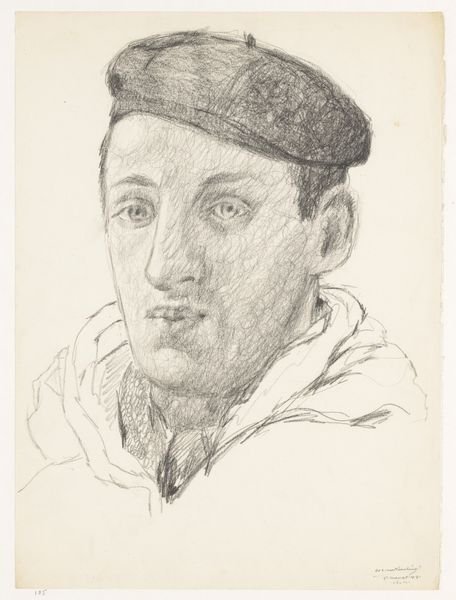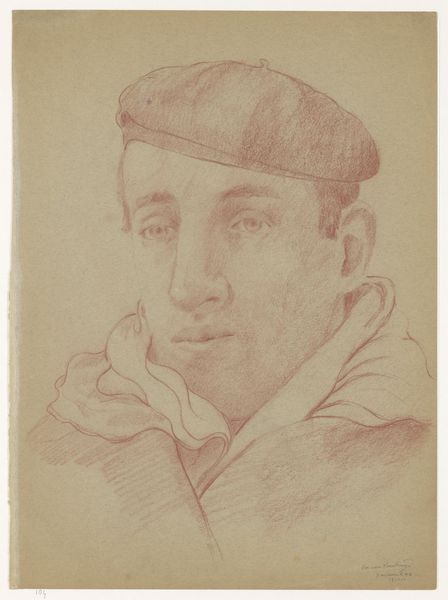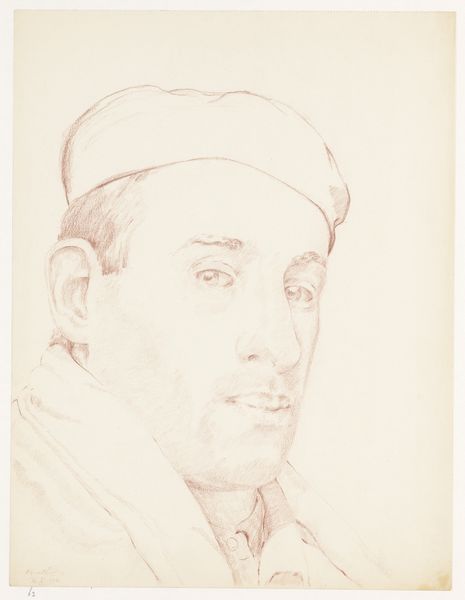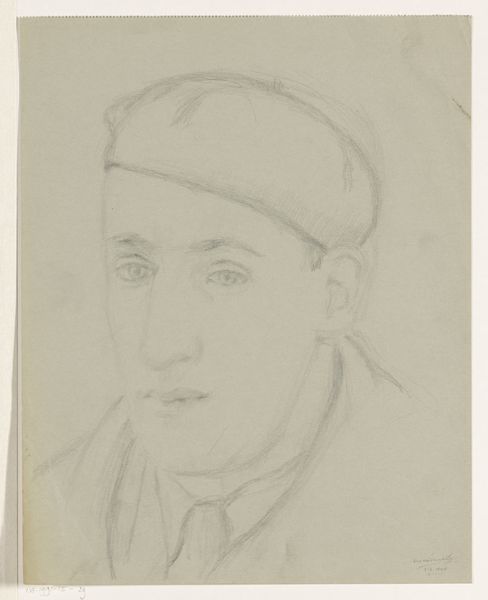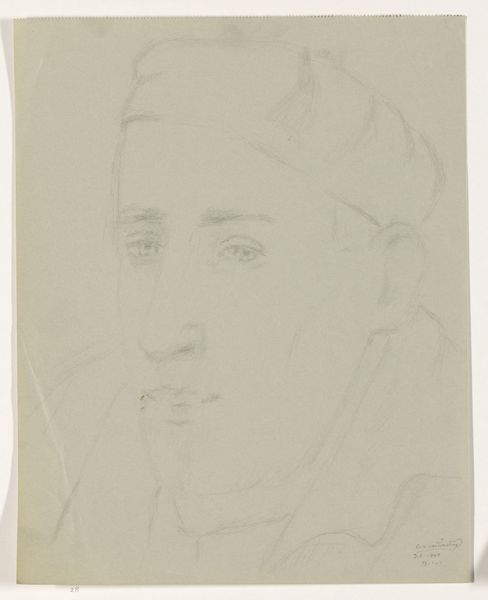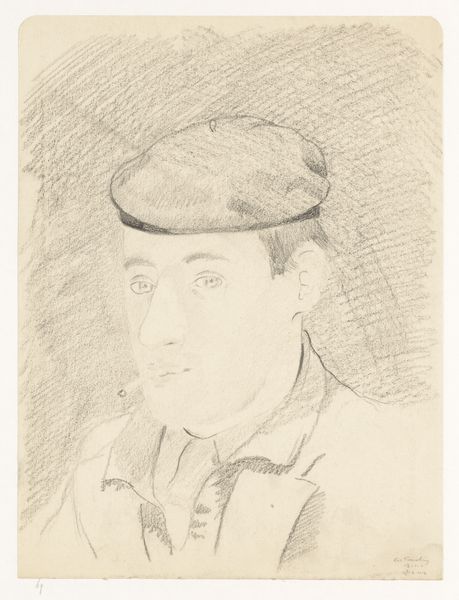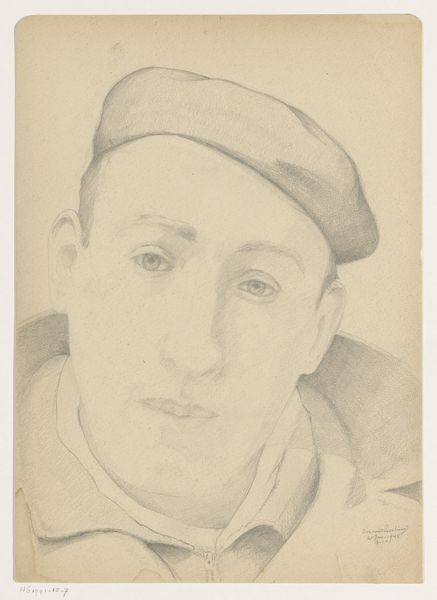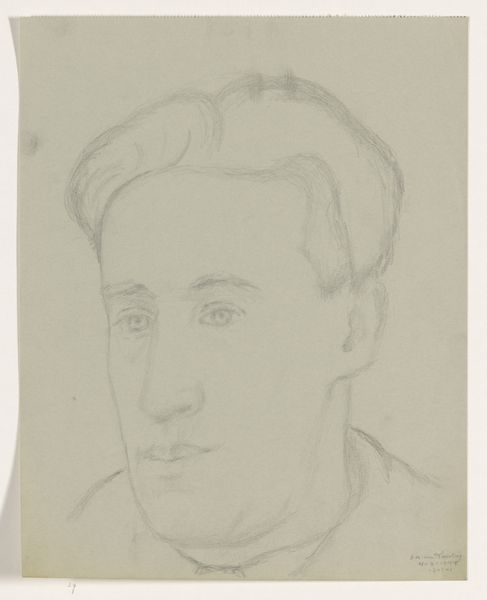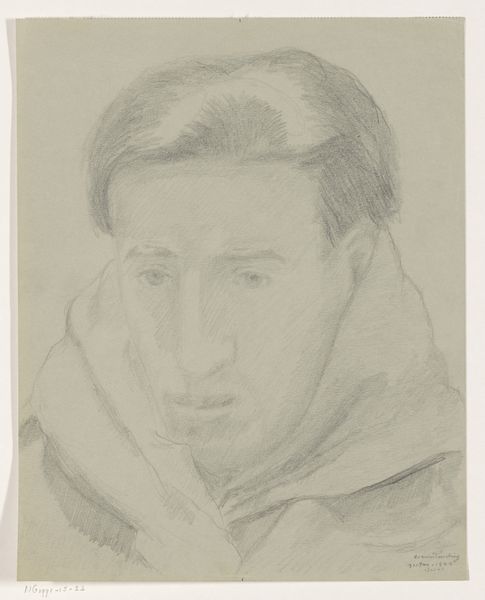
drawing, paper, pencil
#
portrait
#
drawing
#
self-portrait
#
caricature
#
paper
#
pencil
Dimensions: height 36.5 cm, width 27.0 cm
Copyright: Rijks Museum: Open Domain
Editor: We’re looking at “Zelfportret met pet: B-1-1, 5 maart,” a self-portrait drawing by Cor van Teeseling, possibly created between 1942 and 1945. The artist used pencil on paper. It feels very raw and immediate, but I'm curious – what strikes you most about this piece? Curator: The hat. Notice how the beret subtly crowns his head. It speaks to a complex cultural vocabulary – traditionally linked to artists and intellectuals, perhaps, but also hinting at resistance movements during the period this was likely made. This layering of symbolism is intriguing. Do you get a sense of the psychology behind his choices here? Editor: I do. It makes me wonder what he wanted to convey. Was it a statement of identity, defiance, or perhaps something else entirely? Curator: Possibly all of that. He may also be connecting with an enduring symbolic narrative of resilience. Consider the date – potentially during the occupation. How might that context change our interpretation? Editor: The historical background adds another layer of complexity, infusing a sense of urgency and personal risk into something as seemingly simple as a self-portrait. Curator: Precisely. The symbolism woven within this unassuming drawing transforms it into a testament to human spirit, transcending the individual likeness. It highlights our collective cultural memory. Editor: I never considered the hat's deeper meaning. It's fascinating how much information can be packed into a single image. Curator: Indeed. Art allows cultural symbols to be passed down, echoing meanings throughout time. It gives a face to those things otherwise lost in memory. Editor: I will certainly think about the visual vocabulary artists choose in their works going forward. Thanks!
Comments
No comments
Be the first to comment and join the conversation on the ultimate creative platform.
